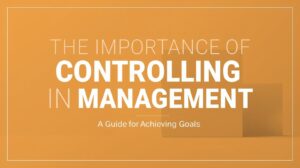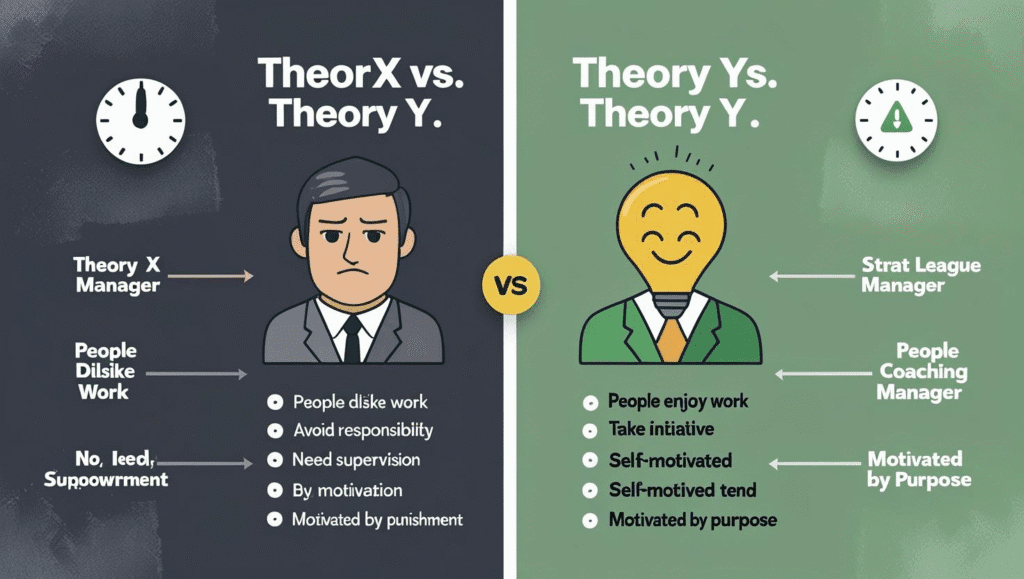The Importance of Controlling in Management: A Guide to Achieving Goals
In the world of management, Controlling is the critical final function that ensures all other efforts—planning, organizing, and leading—actually lead to the desired results. It’s the process of monitoring performance, comparing it with established standards, and taking corrective action when necessary. Think of it like a thermostat: a plan sets the desired temperature, but the controlling function constantly measures the room’s actual temperature and turns the heat or AC on or off to stay on target.
What is the Need for Controlling?
Without the controlling function, management is simply guesswork. A manager can create the most brilliant plan, but without a mechanism to track progress and make adjustments, the plan is unlikely to succeed in the dynamic US business environment. Controlling is needed to transform plans into reality. It closes the loop in the management cycle by providing the essential feedback required for continuous improvement and adaptation.
The control process itself is a logical, three-step loop:
- Setting Performance Standards: Defining clear, measurable goals (e.g., “increase sales by 10% this quarter”).
- Measuring Actual Performance: Collecting data on what is actually happening (e.g., pulling the weekly sales reports).
- Taking Corrective Action: Analyzing deviations and making changes to get back on track (e.g., launching a new marketing campaign if sales are behind schedule).
The 6 Key Points of Importance of Controlling
1. Achieving Organizational Goals
This is the primary importance of controlling. It ensures that an organization’s activities are progressing in a way that aligns with its pre-determined goals. It acts as a navigational guide, constantly checking the company’s position relative to its destination and signaling when a course correction is needed. By continuously monitoring performance, managers can identify obstacles or deviations early and take timely action to overcome them, ensuring the final objective is met.
A software company in California sets a goal to launch a new app by December 1st. The project manager uses a timeline with milestones (a control tool) to track progress. In October, a control report shows the coding phase is two weeks behind schedule. This allows the manager to take corrective action—like reassigning developers or authorizing overtime—to get the project back on track for its launch date.
2. Making Efficient Use of Resources
Every business operates with limited resources: money, time, materials, and people. Controlling is essential for minimizing waste and ensuring these resources are used in the most effective and efficient manner. By setting standards for costs, quality, and quantity, control systems can quickly flag inefficiencies, such as budget overruns, material waste, or idle employee time. This allows managers to intervene and optimize processes, leading to higher productivity and lower costs.
A restaurant in Chicago uses an inventory control system to track its food supplies. The system sets a standard for how much of each ingredient should be used per dish. If the weekly report shows that the kitchen is using 20% more cheese than the standard allows, the manager can investigate for waste, spoilage, or overly large portions, thus making more efficient use of their food budget.
3. Ensuring Order and Discipline
Effective control systems create an environment of accountability and discipline. When employees know that their performance is being measured against clear, fair standards, they are more likely to adhere to company policies and perform their duties responsibly. This helps to minimize dishonest or undesirable behavior and fosters a sense of order. Control is not about punishment; it’s about creating a transparent system where expectations are clear and performance is recognized.
A customer service call center in Phoenix implements a quality control system where a small percentage of calls are randomly monitored and scored against standards for politeness, accuracy, and resolution time. This knowledge encourages all agents to maintain a high level of professionalism and discipline on every call.
4. Facilitating Coordination
In any organization with multiple departments, coordination is key to success. Controlling helps to facilitate this by ensuring that all parts of the business are in sync and working towards the same objectives. Each department has its own standards of performance which are designed to integrate with others. The control function verifies that the output of one department meets the standards required by the next, ensuring a smooth and coordinated workflow across the entire organization.
At an automotive assembly plant in Michigan, the quality control team ensures that the engines produced by one department meet the exact specifications (standards) required for seamless installation by the final assembly department. This control prevents downstream delays and ensures all parts integrate correctly.
5. Improving Employee Motivation
A good control system can be a powerful motivator. When employees are given clear standards and receive regular, objective feedback on their performance, they know exactly what is expected of them and how they are progressing. This clarity reduces ambiguity and frustration. Recognizing and rewarding employees who meet or exceed standards reinforces positive behavior and encourages others to improve, boosting overall morale and motivation.
A sales team in New York City has a clear commission structure and a public leaderboard (control tools) that tracks progress toward individual sales targets. This transparent system provides constant feedback and motivates high-performers through recognition and financial rewards, while also showing others exactly what they need to do to succeed.
6. Facilitating Future Planning
Controlling and planning are two sides of the same coin. The controlling function provides the critical data and feedback that serves as the basis for future planning. By evaluating past performance—what worked, what didn’t, and why—managers can create more realistic and effective plans for the future. The data gathered through control helps to identify new trends, changing market conditions, and internal capabilities, allowing for more accurate forecasting and strategic adjustments.
A national retail chain’s Q3 performance reports (a control document) show that a new product line is underperforming against its sales forecast (the standard). During the annual strategic planning session, this data is used to make a decision: either discontinue the line or revise the marketing plan for it in the upcoming year.
Conclusion: The Compass of Management
The importance of controlling cannot be overstated; it is the function that gives management meaning and purpose. It is the compass that ensures the organizational ship is heading in the right direction, the engine that drives efficiency, and the communication system that keeps the entire crew coordinated. Without effective control, even the best-laid plans are merely hopes, susceptible to the winds of chance and inefficiency.
Frequently Asked Questions
No, this is a crucial distinction. **Controlling** is a positive and necessary management function focused on setting standards, measuring overall performance, and guiding the team toward a goal. It trusts employees to do their work. **Micromanaging** is a negative and dysfunctional behavior where a manager excessively observes and controls the work of their subordinates, dictating *how* every small task should be done. Effective control empowers employees; micromanaging disempowers them.
Managers use a wide variety of tools for control. Financial tools include **budgets**, **financial statements**, and **audits**. Planning and scheduling tools include **Gantt charts** and **PERT analysis**. Performance measurement tools include **Key Performance Indicators (KPIs)**, **balanced scorecards**, and formal **performance reviews**.
Absolutely. If your goal is to save $5,000 for a down payment in a year (planning), you would set a monthly savings standard of about $417. You would then measure your performance by checking your bank account each month (controlling). If you find you’ve only saved $300 one month, you would take corrective action, such as reducing your dining-out expenses for the next month to get back on track.


